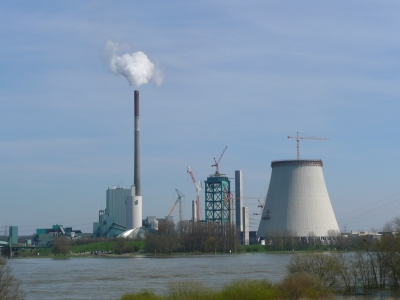To include or not include waste incineration in the EU-ETS has been the subject of diverging views amongst stakeholders and EU co-legislators. The variety of opposing views echo the diversity in national regulatory frameworks already offering a wide range of solutions, from national ETS and taxation systems, to the inclusion of CO2 emissions from municipal waste incinerators.
On the one hand, having an EU-ETS that includes municipal waste incinerators would ensure a level playing field, but there is a need to assess whether this is the most effective way to avoid CO2 emissions when treating non-recyclable residual waste.
FEAD initially conveyed that the whole waste management sector should remain in the ESR, as a consistent and ambitious GHG reduction tool.
We interpret the draft report on the EU-ETS as proposed by MEP Peter Liese as an appeal for more time to develop an impact assessment by 31 December 2025; possibly followed by the inclusion of municipal waste incineration on the 1st of January 2028 with specific measures to prevent a price increase.
In any case, an impact assessment must integrate several important aspects:
- Potential positive or adverse effects on the entire waste management chain, from recycling to landfilling. Penalising waste-to-energy solutions can be a negative signal and detrimental to the diversion of non-recyclable recoverable waste from massive landfilling in some EU countries where more investments for recycling and energy recovery are greatly needed.
- Avoided CO2 emissions using energy from waste instead of fossil fuels must be incorporated during the transition when national energy supplies remain reliant on fossil fuels for their electricity and heating needs. Recovering metals from bottom ashes also avoids emissions in the manufacturing sector.
- Waste-to-energy plays an essential role in circularity by safely treating waste that cannot be prevented or recycled. Sufficient time will in any case be needed to implement the necessary changes in the sector, which will also allow for the development of the required GHG emissions savings from CCS/CCU/BECCS technologies.
- Eco-design and manufacturing plastic, promotion of source separation and separate collection of plastic waste need to be addressed in the impact assessment, and accompanying measures, because for example CO2 emissions in incineration installations mainly come from plastic waste and residues from high quality recycling.
Moreover, true consistency must be ensured with the future Taxonomy rules regarding waste-to-energy installations. The latter must be described as Taxonomy-compliant, if conditions such as: existing national waste management plans, separately collected waste/ residues of sorted waste, check on feasibility of CCU/CCUS solutions.
Whatever solutions come from the impact assessment as proposed by Rapporteur Peter Liese, we highlight the peculiarity and positive role of the entire waste management chain in avoiding CO2 emissions. A transition in waste management must be critically supported by public funding on separate collection, sorting, and on waste-to-energy installations for the treatment of non-recyclable, residual waste.
Peter Kurth, FEAD President stated: ‘waste-to-energy plants not only produce renewable energy and move up the waste hierarchy, but also save significant CO2 emissions compared to electricity and heating produced by fossil fuel combustion. It is crucial that this is recognised in the EU Taxonomy and in the CO2 related EU regulatory instruments if we want to tackle increasing amounts of waste and achieve the EU circular economy objectives’.










